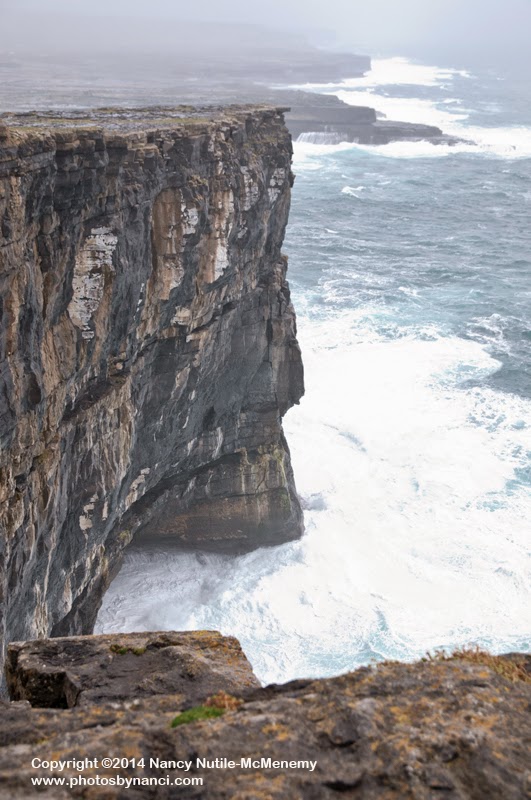Aran Islands #Ireland #goaheadtours
24 November 2014
It was a dark and stormy morning as we boarded the bus from Galway to Doolin.
Doolin is a charming small seaside village on the northwest coast of County Clare on Ireland's Wild Atlantic Way. Set against the rugged Atlantic Ocean and surrounded by the spectacular bare limestone landscape of the Burren, Doolin is a place of breathtaking beauty. Doolin is situated 8 km from the famous cliffs of Moher, 6 km from Lisdoonvarna spa town, 50 km from Shannon Airport and 70 km from Galway City on the west coast of Ireland.
Here we picked up the Ferry to the Aran Islands.
The Aran Islands or The Arans are a group of three islands located at the mouth of Galway Bay, on the west coast of Ireland. They constitute the barony of Aran in County Galway. From west to east the islands are: Inishmore, the largest; Inishmaan, the second-largest; and Inisheer, the smallest. The 1,200 inhabitants primarily speak Irish, the language used in local placenames. Most islanders are also fluent in English.
Dún Aonghasa (anglicized Dun Aengus) is the most famous of several prehistoric forts on the Aran Islands. It is on Inishmore, at the edge of a 100 metre high cliff. It is an important archaeological site that also offers a spectacular view. It is not known when Dún Aonghasa was built, though it is now thought to date from the Iron Age. Some scholars think that it was built in the 2nd century BCE by the Builg following the Laginian conquest of Connacht. Today we know that the first construction goes back to 1100 BCE, when the first enclosure was erected by piling rubble against large upright stones. Around 500 BCE, the triple wall defenses were probably built along the western side of fort.
Dún Aonghasa has been called "the most magnificent barbaric monument in Europe." Its name, meaning "Fort of Aonghas", refers to the pre-Christian god of the same name described in Irish mythology, or the mythical king, Aonghus mac Úmhór.
After a warm up, dry off , and quick bite to eat we checked out a local church ruin before heading back to the harbor town of Kilronan. Cill Rónáin (anglicized as Kilronan) is the main settlement on Inishmore. The main industries are fishing and tourism. School children also visit to improve their Irish at summer schools. As of 2011, 297 people live in the village.
Jay and I stopped at Joseph McDonach's for a hot whiskey and Guinness while waiting for the Ferry back to Doolin. We heard a rumor that this pub was the model for the pub in the movie "Leap Year" and that the bartender had a small role in the film...
We met up with the rest of our crew at the American Bar. The head back across the bay to Doolin.
We had hoped to check out a pub in Satlhill so we asked our bus driver, Tommy, if we could be dropped off on the way into Galway. "No Problem', says he.
We had a lovely dinner at The Oslo Bar. Fish and chips for two and Stormy Port to wash it down. GRAND!
We walked back to the hotel (about 20 minutes) along Galway Bay. Beautiful night for a walk.
More images of Aran Islands: http://photosbynanci.smugmug.com/Ireland-2014/Aran-Islands/
More images of Galway: http://photosbynanci.smugmug.com/Ireland-2014/Galway
Next up, our final adventure-The Cliffs of Moher.
Traditions of Ireland
Go Ahead Tours
November 16-26, 2014
Copyright © Nancy Nutile-McMenemy
www.photosbynanci.com
Ireland Gallery: http://photosbynanci.smugmug.com/Ireland-2014








